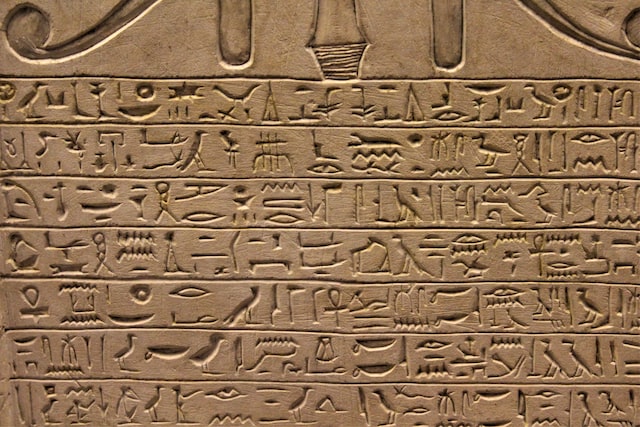Epigraphy and palaeography are two different fields of study that focus on ancient inscriptions and manuscripts, respectively. While epigraphy concentrates on the interpretation of inscriptions, palaeography focuses on the study of handwriting to date and authenticate manuscripts.
What is epigraphy?
Epigraphy is the study of ancient inscriptions and the decipherment and interpretation of their meaning. It is a branch of archaeology, and its primary concern is with ancient writings that have been engraved or incised on hard surfaces, such as stone or metal.
What is palaeography?
Palaeography, on the other hand, is the study of ancient handwriting. Its focus is on deciphering and understanding the scripts used by ancient cultures, as well as on the history of those scripts. Paleography also encompasses the study of how writing systems have evolved over time.
Epigraphy Vs. Palaeography – Key differences
Epigraphy generally deals with shorter inscriptions, such as those found on tombstones or coins. Palaeography, on the other hand, focuses on longer texts, such as manuscripts. Both disciplines require a good knowledge of history and languages in order to interpret the meaning of the inscriptions or texts.
Palaeography can be divided into two main sub-disciplines: diplomatics and codicology. Diplomatics deals with the study of official documents, while codicology focuses on the physical properties of manuscripts (such as their layout, bindings, and materials).
Both epigraphy and palaeography can be useful for historians trying to piece together the past. For example, epigraphic evidence has been used to help date ancient buildings, and palaeographic analysis has been used to decipher medieval manuscripts.
When did epigraphy begin?
Epigraphy began in the late 18th century when scholars started to systematically study ancient inscriptions. This was spurred by the discovery of the Rosetta Stone in 1799, which allowed scholars to decipher hieroglyphs for the first time. Epigraphy has since been used to shed light on a wide range of topics, from politics to religion.
When did palaeography begin?
The study of palaeography, or the history of handwriting, dates back to the Renaissance. However, it was not until the 19th century that palaeography became a formal discipline with its own rules and methods.
Today, paleographers use a variety of techniques to date and decipher handwritten documents. One important method is comparing the handwriting in a document to known samples from other dated documents. This can help narrow down when the document was written and who wrote it.
What does “Epigraphic evidence” mean?
Epigraphic evidence is defined as inscriptions or anything written on a monument or object. This can include graffiti, charms, and curse tablets. This type of evidence is important to historians because it can provide insight into the lives of people who may not have left behind any other written records.
What are epigraphic sources?
Epigraphic sources are texts written on stone or metal that have been preserved through the ages. These texts can be inscribed on buildings, monuments, or other objects. In some cases, they may be carved into the landscape itself. Epigraphic sources can provide information about the history, religion, and culture of a people. They can also shed light on the daily lives of ordinary people and give insights into the thoughts and feelings of people from another time.
Why is inscription important in history?
The inscription is important in history because it allows us to date events and people more accurately. It also provides information about the people who lived in a certain time and place.
Photo by Daniela Turcanu on Unsplash









